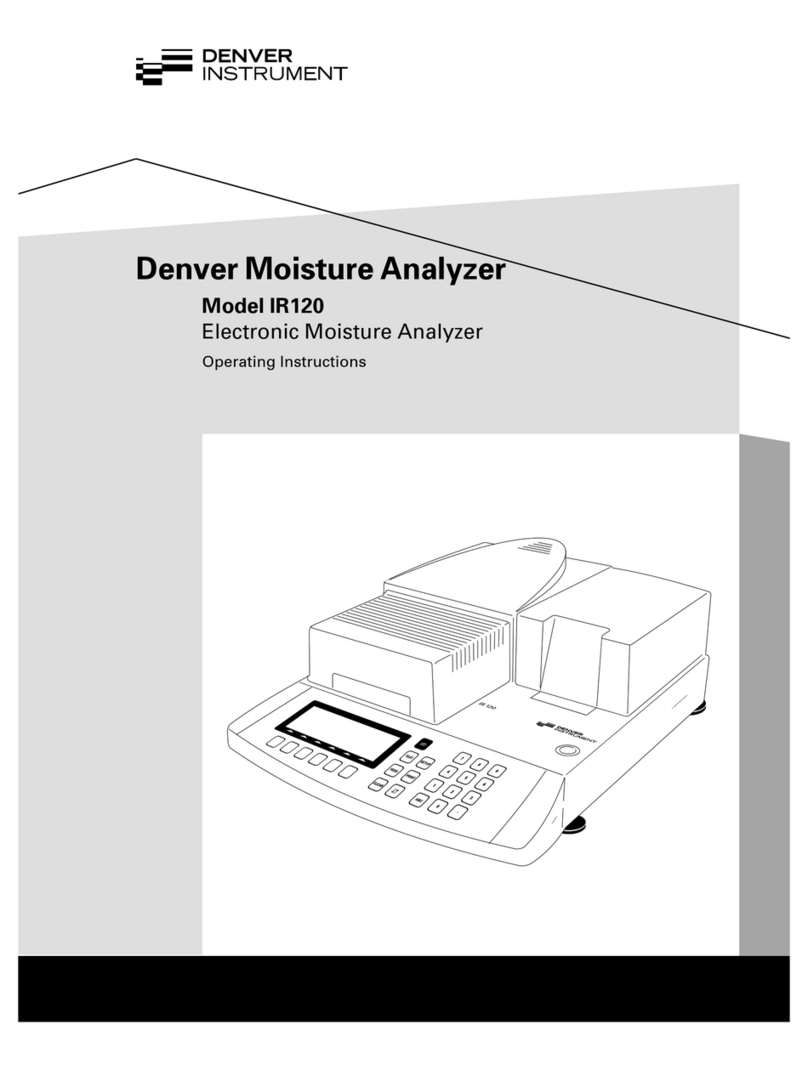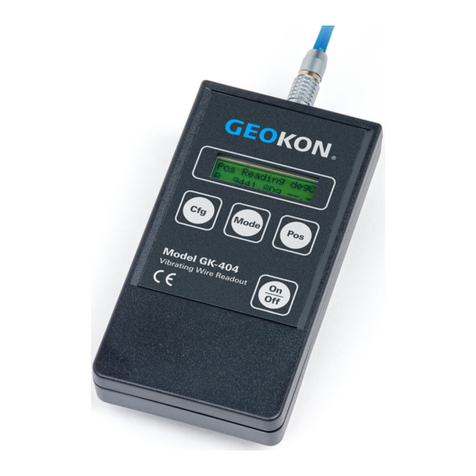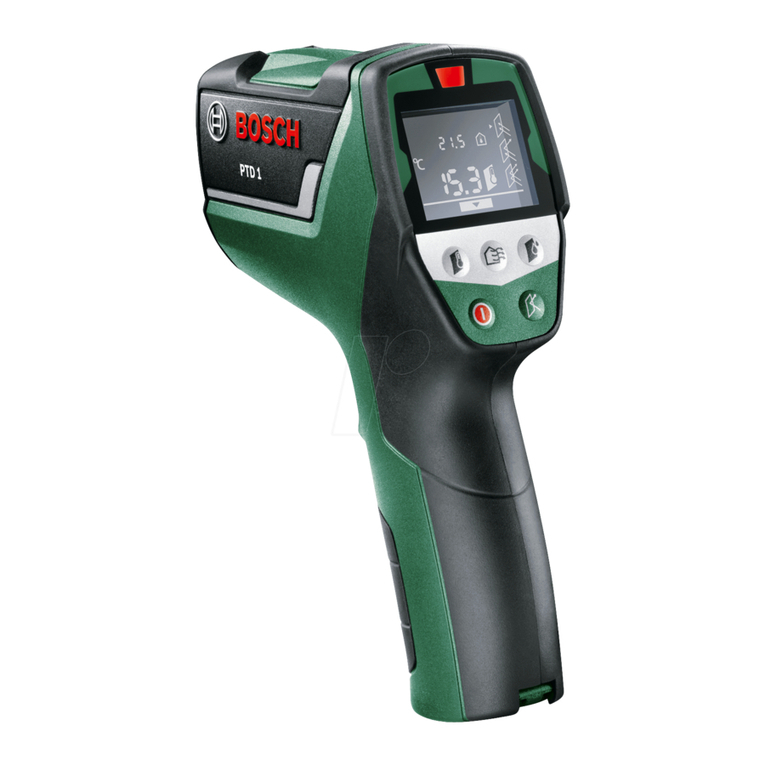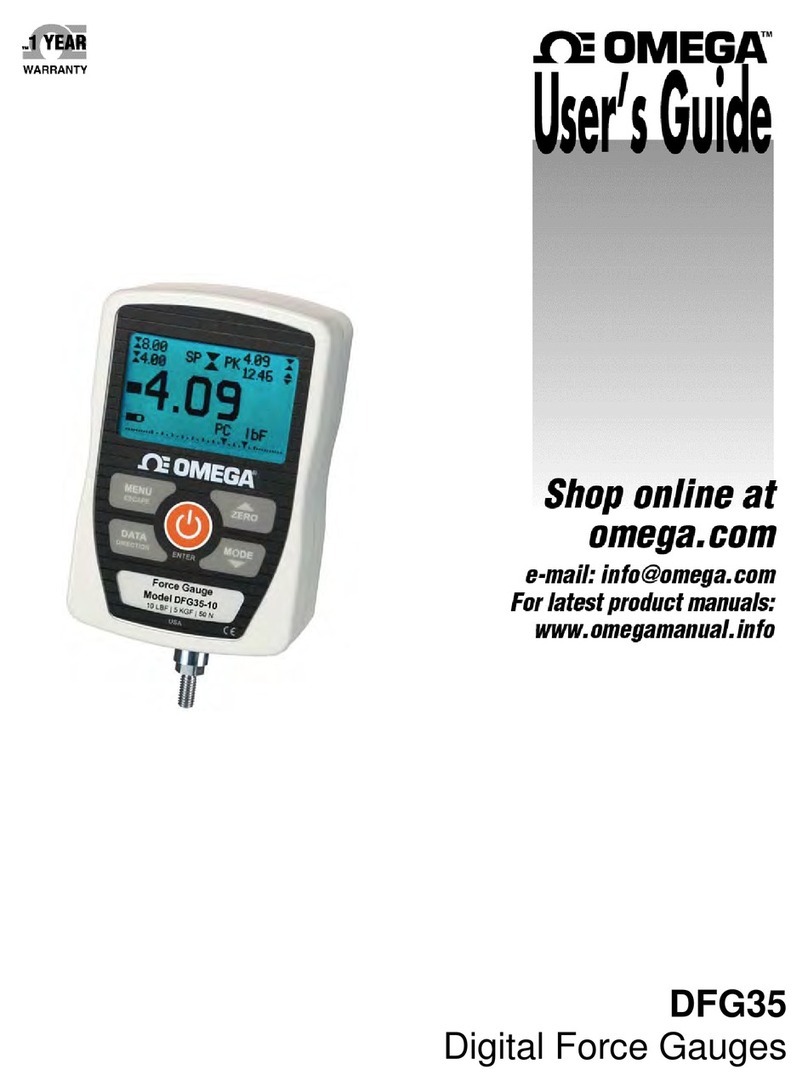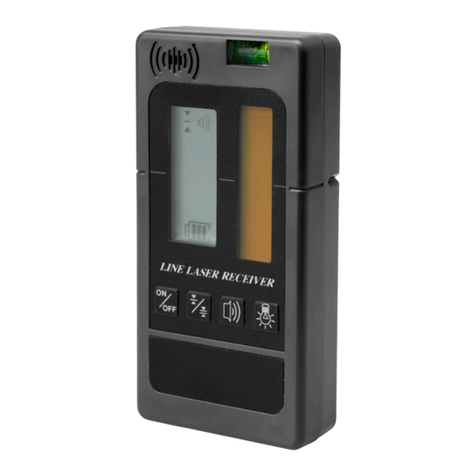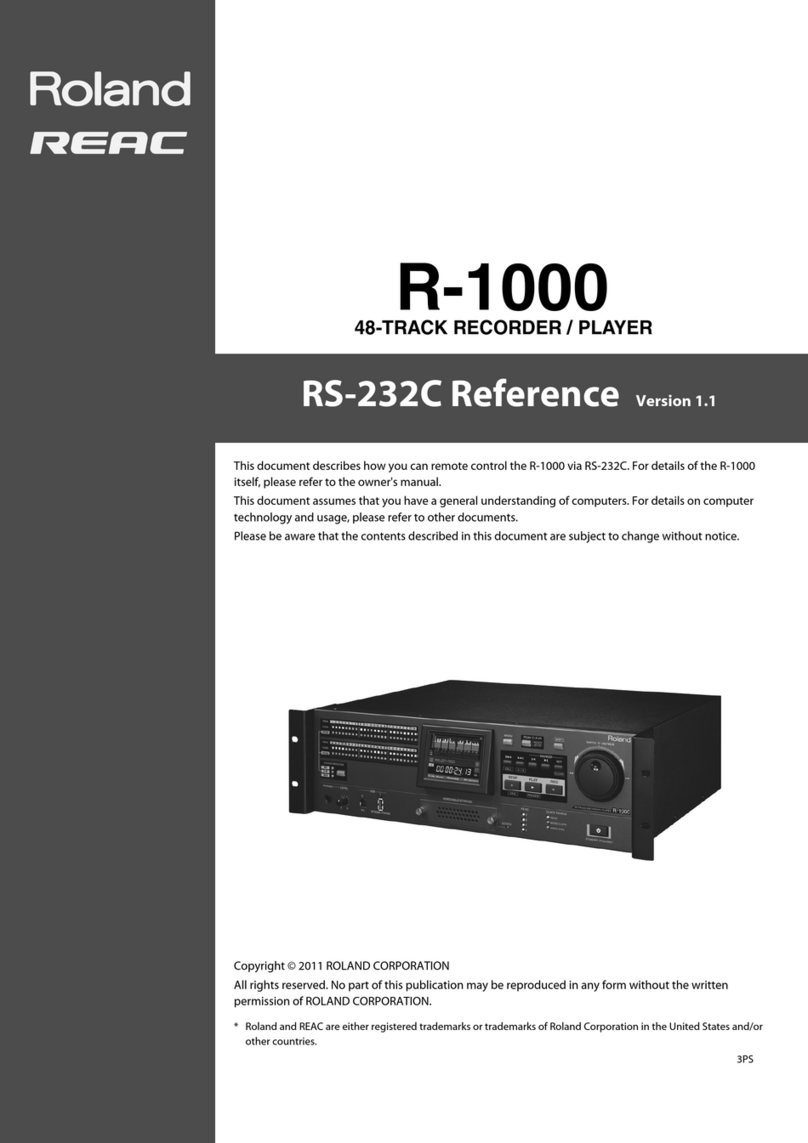Denver Instrument UltraBasic pH Meter User manual

UltraBasic pH Meter
pH-Meter UltraBasic
Operating Instructions/Betriebsanleitung
UltraBasic
S
22.2°C
4.06
pH
Measuring
4
4 7 10
UB-5 pH Meter
enter
mode
setup
standardize

2
English – page 3
Deutsch – Seite 18

3
Contents
Warranty Instructions 4
Disclaimers 5
Meter Specifications 6
Accessories 6
UltraBasic Meter Quick Reference 7
Getting Started 8
Installing and Maintaining Electrodes 10
Standardizing for pH Measurement 11
Using Setup in pH Mode 13
Standardizing for Millivolt Measurement/Relative Millivolts
(UB-10 Model Only) 14
Using Setup in mV Mode (UB-10 Model Only) 15
Troubleshooting 16
CE Marking 17

4
Warranty Instructions
1. Please return the prepaid, pre-addressed Purchase Registration Card to
Denver Instrument Company promptly upon your purchase of the Denver
Instrument product. The return of the card is not a condition precedent to
warranty coverage.
2. If you have any questions about a Denver Instrument product,
please contact the nearest Denver Instrument office as listed below.
3. If it becomes necessary to return your Denver Instrument product for
service, you must obtain a “Return Authorization Number”. Please pack the
product securely in its original approved packing carton or an other suitable
container. Include your Return Authorization Number on the shipping label.
Shipping charges must be fully prepaid.
Return to authorized distributor or:
North and South America: Denver Instrument Company
6542 Fig Street
Arvada, Colorado 80004
USA
1-800-321-1135
Tel: 303-431-7255
Fax: 303-423-4831
U.K. and Ireland: Denver Instrument Company
Denver House, Sovereign Way
Trafalgar Business Park
Downham Market
Norfolk PE38 9SW England
Tel: 44 136 63862 42
Fax: 44 136 63862 04
Europe, Asia and Australia: Denver Instrument GmbH
Robert-Bosch-Breite 10
37079 Goettingen, Germany
Tel: 49 551 20977 31
Fax: 49 551 20977 39

5
Important Note:
The operator shall be responsible
for any modifications to Denver
Instrument Company equipment
and for any connections of cables or
equipment not supplied by Denver
Instrument and must check and if
necessary, correct these modifica-
tions and connections.
You have purchased a quality
precision meter that requires
handling with care.
Read entire contents of these
Operating Instructions prior to oper-
ating your new Denver Instrument
meter.
Caution:
Changes or modifications not
expressly approved by the
manufacturer could void the
product’s warranty.
Disclaimers

6
Meter Specifications
pH Range 0.00 to 14.00 pH
Resolution 0.01 pH
Accuracy ±0.01 pH
mV (UB-10 only) Range -1800.0 to 1800.0 mV
Resolution 0.1 mV
Accuracy ±0.2 mV or 0.05%, whichever is greater
Temperature Range 0.0 to 100.0°C
Resolution 0.1°C
Accuracy ±0.2°C
Standardization 1, 2 or 3 buffers
Auto buffer 16 buffers
recognition 2, 4, 7, 10, 12
1, 3, 6, 8, 10, 13
1.68, 4.01, 6.86, 9.18, 12.46
Auto pH temperature compensation with ATC probe
Automatic pH electrode slope correction for 90-105%
Accessories
You can order the following accessories for your pH meter:
Replacement UltraBasic pH electrode 301423.1
Plastic-body pH/ATC electrode 300728.1
High-performance glass-body 300729.1
pH/ATC electrode (Tris-compatible)
ATC temperature probe 300733.1
Free-standing electrode arm with base 300401.1
Other electrodes, such as ion-selective electrodes and redox electrodes
are also available. Contact your sales representative for information.

7
1. Connect an AC adapter to the
power connection.
2. Connect an electrode to the Input
and ATC connectors, if desired.
3. Press mode until the display
indicates the appropriate measure-
ment mode (pH or mV/relative
mV).
4. Standardize the meter using up
to three buffers by immersing the
electrode in a buffer, stirring, then
pressing standardize to enter each
buffer.
Power
Ref
Input
ATC
5. The display shows the current
reading in pH, mV, or relative
mV units.
6. Press setup to review electrode
calibration and to clear or select
buffer sets.
mode enter
setup
standardize
pH
°C
S
4 7 10
UltraBasic
UltraBasic Meter Quick Reference

8
Getting Started
Front Panel Controls
Digital Display
Note: Not all display symbols are used.
mode enter
setup
standardize
pH
°C
S
4 7 10
UltraBasic
1.68 4.01 6.86 9.18 12.46 S1 S2 S3
32
1%/°C
Auto
Man
Set
Clear
OK
Error
1234567810101213
Sal
TDS
%DO
mg/L
S/cm cm ion rel mV pH
m
µK
M
°C
S
setup –press
to clear buffers,
review electrode
calibration or
select new auto-
detected
buffer set.
mode –press to
toggle between pH
or mV mode.
(UB-10 only)
enter –press to
select options.
standardize –
press to auto-
detect each
buffer.
Measuring
symbol
Standardizing
symbol
Stability
symbol
Electrode
Check symbol
Temperature
Mode
Result
Prompts
Buffer symbols
Slope symbol

9
Rear Panel Connectors
Power
Ref
Input
ATC
Power cable
connector
BNC
electrode
connector
ATC (automatic
temperature
compensation)
probe connector
Reference electrode
connector (used with
separate reference
electrodes)

10
Installing and Maintaining Electrodes
1. Remove the protective end cover
from electrode.
2. Before using your pH electrode, or
whenever the electrode is dry, soak
over-night in an electrode filling
solution, KCI solution or electrode
storage solution.
3. Remove the shorting cap on the
BNC connector. Install the electrode
by plugging it into the input con-
nection (push on and twist to lock).
An accessory ATC probe can be
installed in the ATC port for the
most accurate measurement.
If a separate reference electrode is
used, plug the reference electrode
into the ref pin.
4. Rinse and blot-dry electrodes
between each measurement
(do not wipe). Rinse electrodes
with distilled water or deionized
water, or part of the next solution
to be measured.
5. Store pH electrodes in KCI solution
or electrode storage solution.
Always leave the filling hole open
when in use and closed when in
storage. Refill with filling solution
when the internal solution level
drops to 1”below fill hole.
Note: The electrode that comes
with the UltraBasic kit is gel-filled.
It has no filling solution or filling
hole.

11
Standardizing for pH Measurement
Because electrodes vary in their response, you
must standardize your pH meter and electrode
to compensate for electrode variation. The more
frequently you standardize, the more accurate your
measurements. We recommend standardizing at
least once a day for best results.
Note: To exit the standardizing mode,
press “Standardize“key again.
1. Immerse electrode in a buffer solution.
Stir gently. Allow the electrode to reach
a stable value.
2. Press and release the mode button until the
display indicates pH mode.
3. Clear existing buffers when performing a new
standardization. Use the setup and enter
buttons to clear existing buffers.
4. Press standardize. The meter flashes the current
buffer set and detects the flashing buffer. When
the signal is stable, or when you press enter,
the buffer is stored.
5. The meter displays the percent slope of
the electrode as 100.0% on the first buffer.
On entering a second or third buffer, the meter
performs a diagnostic check on the electrode
and displays the slope.
6. To enter a second buffer, place the electrode in
the second buffer solution, stir, allow time for the
electrode to stabilize, and press standardize
again. The meter detects the buffer.
pH
°C
S
4 7 10
standardize
setup
entermode
2 4 7 10 12
pH
°C
S
standardize
setup
entermode

12
7. Next, the meter performs a diagnostic test of
the electrode. The display indicates electrode
condition. The meter displays the % slope of
the electrode.
8. Error displayed with the Slope symbol indicates
that your electrode is not working properly.
The electrode response must be between
90 and 105% slope. Measurements causing
Slope Error are not accepted, used or stored
by the meter. Press enter to continue.
9. To enter a third standard, place the electrode in
the third buffer solution, stir, allow to stabilize,
and press standardize. The results will be the
same as in steps 7 and 8.
10. After entering each buffer, the Standardizing
symbol goes off and the Measuring or Stable
symbol appears on the display to indicate that
the meter has returned to Measuring operation.
11. Standardize your meter and electrode using
at least two buffers with pH values above and
below the expected pH of your samples.
Stirring with a magnetic stir bar and stirrer
provides faster electrode response.
Note: If an ATC probe is used, the meter continually
adjusts for temperature. Therefore, buffers
may vary slightly from the nominal values due
to temperature factors.
Default temperature is 25°C
Note: The temperature is displayed only if an
ATC probe is attached.
OK
4 7
pH
standardize
setup
entermode

13
Using Setup in pH Mode
The setup button lets you clear all the buffers/
standards that you have entered, review calibration
information, or select the buffer/standard set that
you want.
Note: Continuing to press setup will return you
to measurement mode.
1. Press setup and the meter displays a flashing
Clear icon. Continue with this step only if you
wish to clear all buffers you have entered.
To clear all existing buffers, press enter.
The meter clears all buffers and returns to the
Measuring screen.
2. Press setup again to show electrode perform-
ance. If two buffers have been stored, the meted
displays Good Electrode, display the slope
between the first and second buffers and display
the two buffer icons.
3. Pressing setup again shows the electrode
slope between the second and third buffers
(if three buffers have been entered) and
shows the second and third buffer icons.
Note: These screens will only be displayed if
buffers are stored.
4. Press setup again to display a flashing Set
Buffers icon and to display the first buffer set
(U.S. buffer series) icons.
5. Press enter to select the set of buffers shown
on the display
or
Press setup again to view the next set of buffers
(Merck buffer set). Continue pressing Setup
to view the third buffer set (NIST buffer set).
Clear
pH
4 7
Set
2 4 7 10 12
pH
standardize
setup
entermode
standardize
setup
entermode

14
Standardizing for Millivolt Measurement/
Relative Millivolts (UB-10 Model Only)
Millivolt measurement is used for electrode
diagnostics, titration or measuring redox potential
(also called ORP, oxidation/reduction potential).
ORP measurements indicate the oxidizing or
reducing capability of a solution. You can use ORP
values to monitor or control solutions requiring
a set amount of oxidants or reductants.
1. Immerse electrode in a standard solution.
2. Press the mode button until the display indicates
mV mode.
3. Press standardize to enter a mV standard
and read relative mV.
4. When the signal stabilizes, or when you press
enter, the current absolute mV value becomes
zero relative millivolts.
rel mV
°C
S
standardize
setup
entermode

15
1. To clear an mV offset and return to absolute
millivolt mode, press setup. The meter displays
a flashing Clear icon, and shows the current
relative millivolt offset.
2. To clear the mV standard, press enter.
The meter returns to absolute mV mode.
Using Setup in mV Mode (UB-10 Model Only)
Clear
rel mV
standardize
setup
entermode

16
Troubleshooting
1. If the signal from the electrode is out of range,
the display will show “- - -”. This may indicate
that the electrode is not in a solution.
2. If the meter detects an error in the temperature
probe, the display shows “- - -”. If you do not use
a temperature probe, the meter uses the default
temperature of 25°C.
3. The meter will display Electrode Error when it
detects an error in electrode response. During
standardization, the message indicates that the
electrode is less than 90% or more than 105%
of the correct response. The Electrode Error
message can indicate either a bad electrode
or bad buffer(s).
4. To test the pH electrode, place it in a good pH 7
buffer. Press mode to use the mV mode, and
note the millivolt reading. Make sure the meter
is in mV mode and not relative mV mode. Repeat
for either a pH 4 or pH 10 buffer. The electrode
signal must be within the limits shown below
(when temperature is near 25°C).
5. To test the meter for correct operation, install
the BNC (input) shorting cap. Press mode to
select the mV mode, and note the mV reading.
Make sure the meter is in mV mode and not
relative mV mode.If the meter reads 0 + 0.3 mV,
it is measuring correctly. Note that a long term
drift of 0.1 mV/month since the last calibration is
specified.
Electrode Test
pH 7 0 ± 30 mV
pH 4 159 to 186 mV more than pH 7
pH 10 159 to 186 mV less than pH 7
pH
°C
S
standardize
setup
entermode
Error
4 7
pH
standardize
setup
entermode

17
CMarking
C
The Cmarking affixed to the equip-
ment indicates that the equipment
meets the requirements of the
following Directive(s) issued by the
Council of the European Union:
Council Directive 89/336/EEC
“Electromagnetic compatibility
(EMC)”
1. Electromagnetic Compatibility
1.1 Reference to 89/336/EEC:
Official Journal of the European
Communities, No. 2001/C 105/03
EN 61326-1 Electrical equipment for
measurement, control
and laboratory use
EMC requirements
Part 1: General requirements
Defined immunity to
interference: Industrial
areas, continuous non-
monitored operation
Limitation of
emmissions:
Residential areas,
Class B
Important Note:
The operator shall be responsible
for any modifications to Denver
Instrument equipment and for any
connections of cables or equipment
not supplied by Denver Instrument
and must check and, if necessary,
correct these modifications and
connections. On request, Denver
Instrument will provide information
on the minimum operating specifi-
cations (in accordance with the
Standards listed above for defined
immunity to interference).
73/23/EU “Electrical equipment
designed for use within
certain voltage limits”
Applicable European Standards:
EN 60950 Safety of information
technology equipment
including electrical
business equipment
EN 61010 Safety requirements
for electrical equipment
for measurement,
control and laboratory
use
Part 1: General
requirements
If you use electrical equipment in
installations and under ambient
conditions requiring higher safety
standards, you must comply with
the provisions as specified in the
applicable regulations for installation
in your country.

18
Inhaltsverzeichnis
Technische Daten des Messgerätes 19
Zubehör19
Kurzanleitung für das UltraBasic-Messgerät20
Inbetriebnahme 21
Installation und Wartung der Elektroden 23
Kalibrieren für pH-Messungen 24
Verwendung des Setup-Menüs im pH-Modus 26
Kalibrieren für Messungen in Millivolt/relative Millivolt
(nur bei Modell UB-10) 27
Verwendung des Setup-Menüs im mV-Modus (Modell UB-10) 28
Fehlerbeseitigung 29
CE-Kennzeichnung 31

19
Technische Daten des Messgerätes
pH Bereich 0,00 bis 14,00 pH
Ablesbarkeit 0,01 pH
Genauigkeit ±0,01 pH
mV (nur UB-10) Bereich -1800,0 bis 1800,0 mV
Ablesbarkeit 0,1 mV
Genauigkeit ±0,2 mV oder 0,05%, je nachdem,
welcher Wert über 0 liegt
Temperatur Bereich 0,0 bis 100,0°C
Ablesbarkeit 0,1°C
Genauigkeit ±0,2°C
Kalibrierung 1, 2 oder 3 Puffer
Automatische 16 Puffer
Puffererkennung 2, 4, 7, 10, 12
1, 3, 6, 8, 10, 13
1,68; 4,01; 6,86; 9,18; 12,46
Automatische Temperaturkompensation durch Temperaturfühler
Automatische Korrektur der Elektrodensteilheit zwischen 90 und 105%
Zubehör
Für Ihr pH-Messgerät ist folgendes Zubehör lieferbar:
Ersatz-pH-Einstabmesskette für das UltraBasic-Messgerät 301423.1
pH-Einstabmesskette mit ATC-Temperaturfühler, Kunststoffkörper 300728.1
Hochleistungs-pH-Einstabmesskette mit ATC-Temperaturfühler, 300729.1
Glaskörper (geeignet für Tris-Puffer)
ATC-Temperaturfühler 300733.1
Elektrodenarm, freistehend mit Grundplatte 300401.1
Darüber hinaus sind auch andere Elektroden wie z.B. ionenselektive Elektroden
und Redoxelektroden erhältlich. Wenden Sie sich zu diesem Zweck an Ihren
Verkaufsberater.

20
Kurzanleitung für das UltraBasic-Messgerät
Schließen Sie das Netzteil an eine
Steckdose an.
Schließen Sie die Elektrode an
die Eingangsbuchse und, falls
gewünscht, an die ATC-Anschlüsse
an.
Drücken Sie die Mode-Taste, bis in
der Anzeige der gewünschte Mess-
modus (pH oder mV/relative mV)
erscheint.
Kalibrieren Sie das Messgerät mit
bis zu drei Puffern, indem Sie die
Elektrode in eine Pufferlösung ein-
tauchen, die Pufferlösung rühren und
dann die Taste Standardize drücken,
um jeden Puffer einzugeben.
Power
Ref
Input
ATC
Im Display wird der aktuelle Mess-
wert in den Einheiten pH, mV oder
relative mV angezeigt.
Drücken Sie die Setup-Taste, um
Informationen über die Elektroden-
kalibrierung anzuzeigen oder um
Puffersets auszuwählen bzw. zu
löschen.
mode enter
setup
standardize
pH
°C
S
4 7 10
UltraBasic
Table of contents
Languages:
Other Denver Instrument Measuring Instrument manuals
Popular Measuring Instrument manuals by other brands
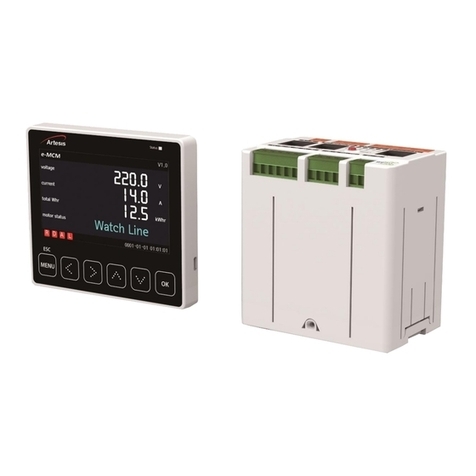
Artesis
Artesis eMCM user manual

Feig Electronic
Feig Electronic ID ISC.ANT1710/690 Crystal Gate Excellence... Quick installation

Fluke Calibration
Fluke Calibration 1586A Super-DAQ Application note
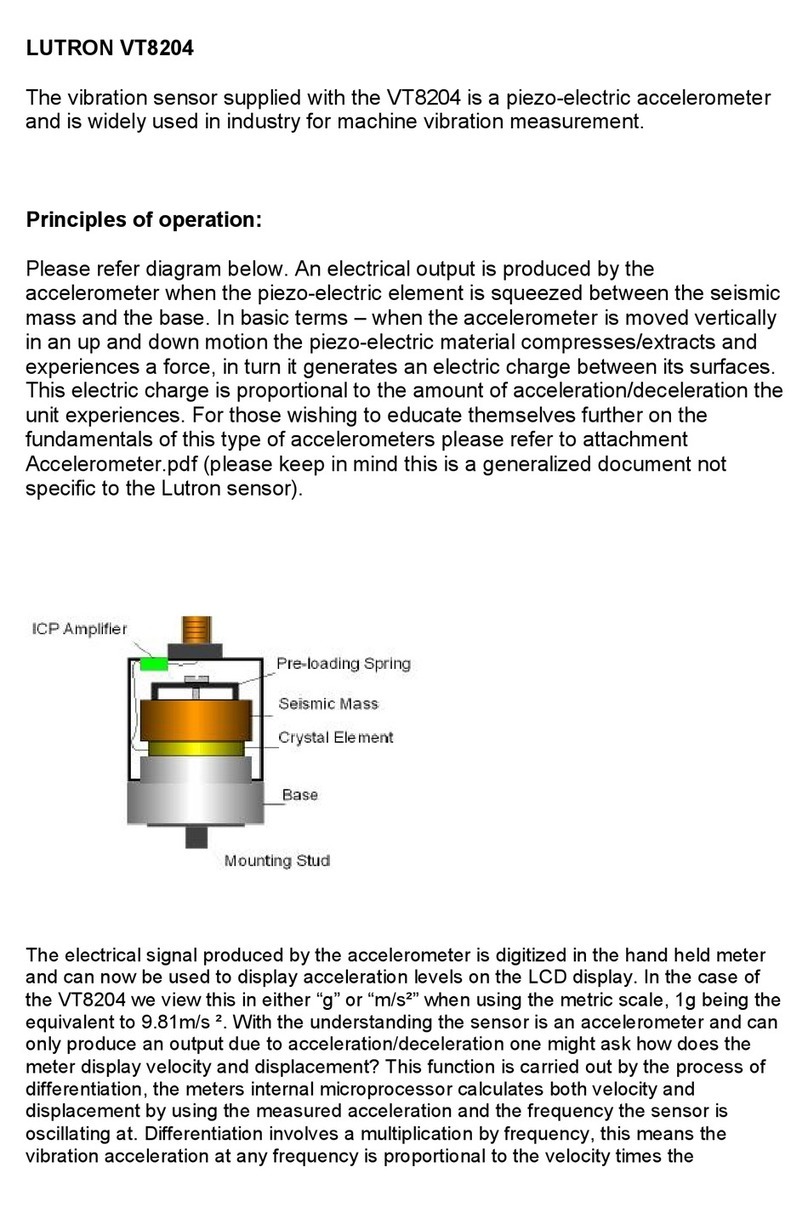
Lutron Electronics
Lutron Electronics vt-8204 user manual
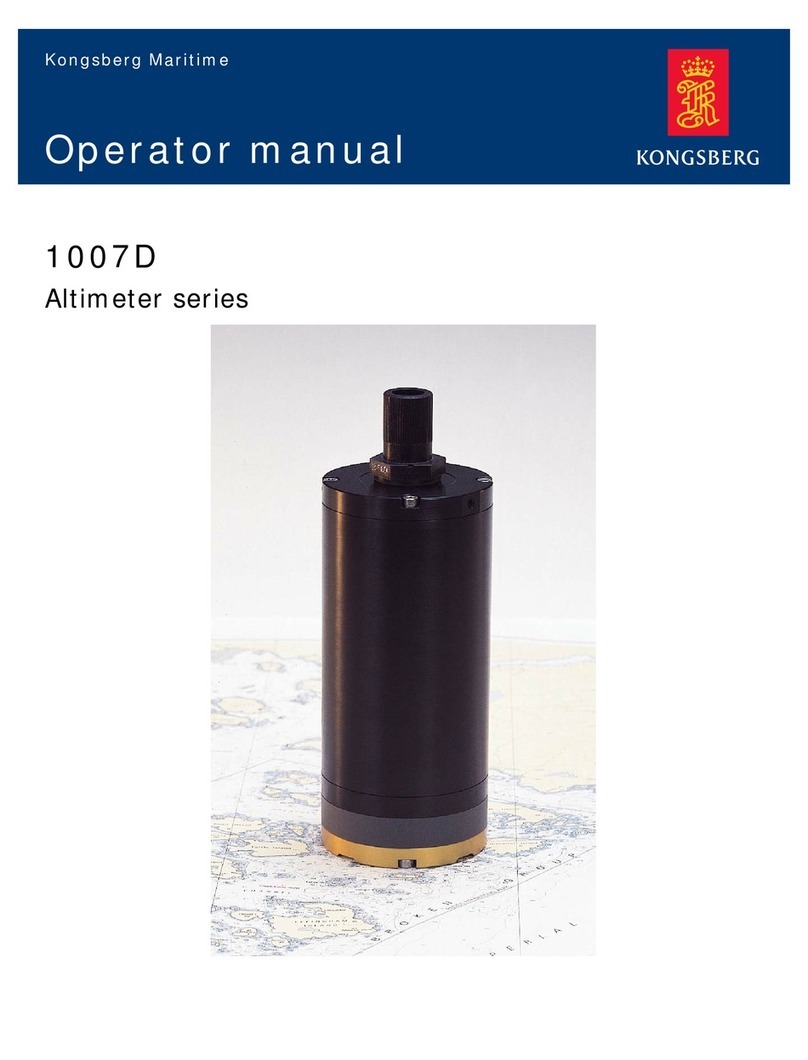
Kongsberg
Kongsberg 1007D Operator's manual

York Survey Supply
York Survey Supply 330550 operating instructions



